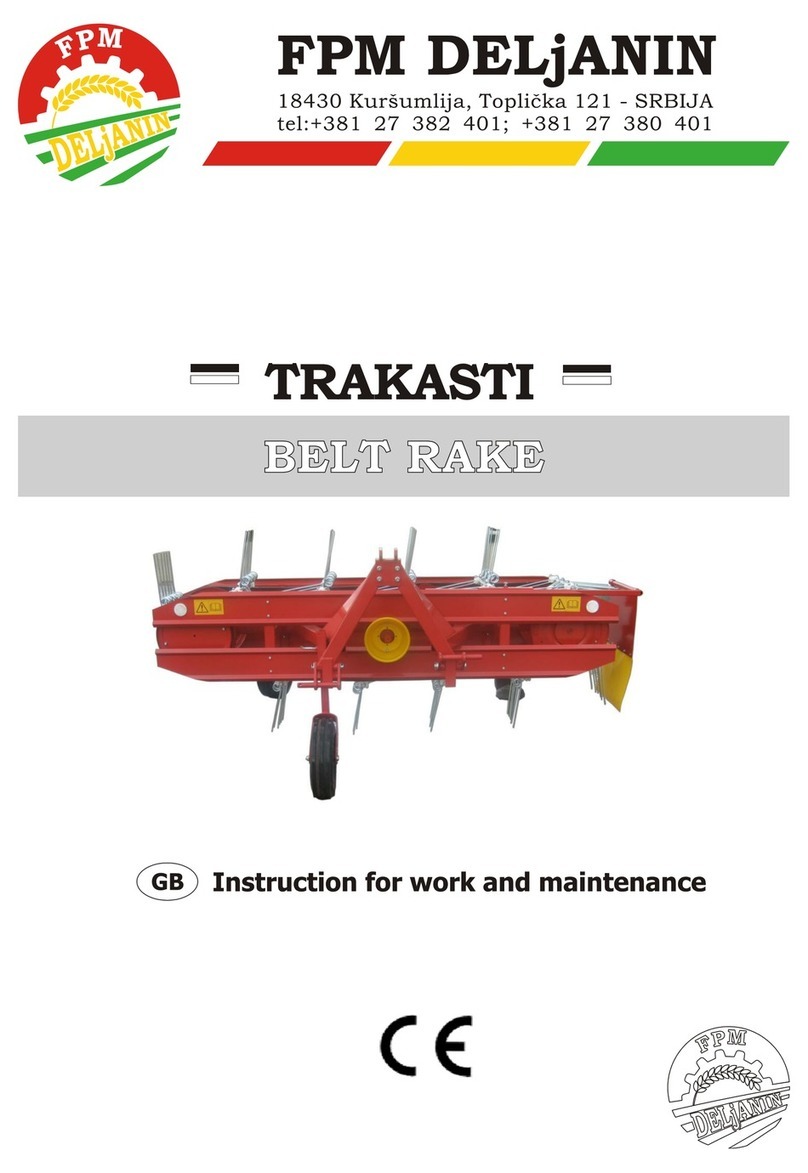
Page 6
SAFETY
Most accidents occurs during operation, maintenance and transport as a result of failure to comply
with basic safety requirements. For this reason, you are the most important person for operation and
maintenance of the belt rake, whether you work alone, with family members or other persons, be
sure to read and observe the basic procedures for working with the belt rake that should also be heard
by all others. In addition, the hay rake is provided with the warning labels that should draw attention
to the obligation to observe safety.
The instructions for operation, maintenance and safety at work must be unconditionally
observed in order to secure a safe and secure work with belt rake.
Instructions for use and maintenance must be kept for the estimated operating time of the belt
rake.
The metal plate must always be legible, visible and clean.
Before starting work the operator must be absolutely familiar with the functioning of all parts of
the belt rake, it might be too late during the work.
When connecting or disconnecting the belt rake to and from the tractor, always move the
supporting (the third) wheel to the adequate position (safety).
When disconnecting or connecting the belt rake to and from the tractor, be particularly careful.
Before use, check the ballast of the front tractor wheels. Fix the weights at the adequate place.
Observe the permitted axle load and total weight.
Due to safety requirements while driving, use a tractor with a cabin. Keep all the glasses closed
while working.
Before you start the belt rake, even for a very short distance, always turn and secure it in its
transport position. Pay attention to the permitted dimensions when transporting.
Before you start driving on public roads, be sure to secure the belt rake for safe driving and obey
the rules of conduct in public transport.
When required by special circumstances, use the light signals to indicate the danger if it is not
forbidden by traffic regulations.
Never transport other persons on the either belt rake or tractor during work or transport.
Do not transport belt rake if it is loose and not-secured for safe driving.
Each time before using the belt rake, make sure that all the parts (nuts, screws, etc.) are
adequately tightened.
If the collecting elements and/or the parts that are used to tighten them (bolts, screws, etc.) are
worn or damaged, replace them immediately with the original parts manufactured by FPM
AGROMEHANIKA d.o.o. BOLJEVAC




























